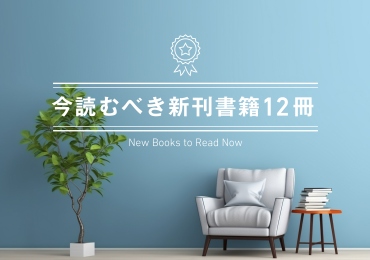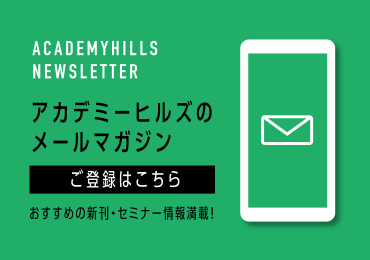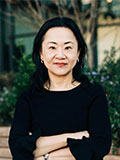記事・レポート
活動レポート
"IDEO: Designing Human Experiences" Seminar Report
活動レポートグローバル経営戦略政治・経済・国際
更新日 : 2016年10月04日
(火)
Written by Kaho Shimizu
Photo by Shinichiro Mikuriya
Session Date: June 29, 2016
IDEO, known as one of the most prominent design firms in the world, has been advocating “Design Thinking” to stimulate innovation in business. At the 4th session of the Global Agenda Series 2016, we invited Mr. Gregory Perez from IDEO Tokyo to discuss how IDEO approaches business challenges using their design thinking methodology.
All the tickets for the session were sold out, reflecting the high level of interest among business people.
【日本語レポート】

It all comes down to curiosity
Mr. Perez’s presentation began with him providing an overview of IDEO, the company’s history and its work throughout the world.
He said at IDEO, two elements are deemed very important --- curiosity and impact.
My job at IDEO is to be curious, get inspired and inspire others,” said Mr. Perez, adding that always being curious leads you to notice things that others don’t or that they take for granted, which is important to uncovering unmet needs in society.
“Our purpose at IDEO is to create disproportionate impact through design. We are not a big company but we want to make sure that what we do in the world through design has impact disproportionate to the size of our business.”
“And just because you work at a large company doesn’t mean you have a big impact. I’d like to think it’s the other way round, if you work at a small place which has a size that is manageable and a size that gives you the ability to move fast and have disproportionate impact, don’t you think it’s a lot more fun?”
Mr. Perez used to work as a journalist. At IDEO, many other designers have similar pasts --- including those who worked as doctors, anthropologists, psychologists and product designers --- allowing IDEO to have diversity within its office which is also important for a designer to do his/her design work.
Mr. Perez then moved to describing the 3 pillars of Design Thinking: “feasibility,” “viability,” and “desirability.”
True innovation happens at the nexus point of these 3 parts, he says, but deciding from which of the three to start is most important at IDEO.
Many people tend to start with “feasibility” or “viability,” but IDEO’s designers always start with human desirability.
“Do people want it? Is it important to somebody’s life? …Starting with human desirability enables you to uncover potential consumer needs to design things,” Mr. Perez said.
He believes that “Design Thinking” is something that Japanese companies need right now in order to compete on a global scale. Referring to the term “Kaizen,” which can be explained as a principle of continuous improvement, Mr. Perez said Japanese companies are good at improving existing systems and products going from “1 to 100.”
“Kaizen” is a Japanese concept recognized worldwide as a method to improve efficiency and quality over and over again, and the thinking that led the success of many Japanese companies in the postwar period.
“Design Thinking,” which is to create something new from “0 to 1,” can complement “Kaizen” well, he said, adding that by combining the two concepts, you can create something new and then improve it over time.

Mr. Perez’s approach to business challenges and his design thinking projects
He then moved to describing the steps designers at IDEO follow when they approach business problems.
In the first phase of design research, designers are exposed to the voices of people who would be using the thing that they are going to design. They learn, listen and get inspiration from various people in search for hidden consumer needs and potential opportunities.
The second phase is about synthesis, pulling all the pieces of inspiration together and turning them into insights. It is then followed by brainstorming to imagine what the future would look like and design something that people would want to use based on the insights they received.
In the third phase, they would build prototypes. The design thinking methodology encourages them to actually make something out of the idea in the early stage. After going through many rounds of testing and getting feedbacks, they continue building prototypes over and over again until they become more sure users are happy with it.
Citing some examples, Mr. Perez explained in detail the importance of “empathy” and “prototyping” --- the concept of “Talk Less, Do More” --- when doing their work.
Mr. Perez then talked about how he approached his design projects in Asia. One of them was “Wall Street English,” which was to design physical space for English learners in China. The details of the project are available in English from IDEO's website below.
Designing a Social Learning Environment in China

The differences between desirability and conventional customer orientation
The Q&A session with the audience attracted many questions asking about the details of design thinking projects --- cases of cross-cultural design projects, how to measure the impact of their work, what is being done to make sure that the impact will last even after the designers leave, and cases of failure.
During the discussion with Professor Yoko Ishikura, the moderator of the session, she asked a very fundamental question: “Many companies talk a lot about customer orientation and customer satisfaction, but when it comes to carrying out actual operations, it’s not always the case. How do you always make sure that you really start with desirability?”
Mr. Perez replied as follows:
“Market research is a systematic approach which is used to measure and analyze users’ past experiences and consumer behavior, but design research is a bit different. In order to understand human desire and empathize, it starts by asking questions of the people for whom you are designing and observing how they behave.”
“At IDEO, we start with a very small set of people --- about 12 to 20 people ---and oftentimes our clients ask if that is enough. But in design research, which takes time to listen to the voices of individuals to search for their desire at a deep psychological level, you can get inspiration and discern a pattern even from 10 people. If you want to measure a market size before launching new services and products, that is where market research and quantitative research comes in.”
“That is why being curious is the most important aspect for a designer at IDEO because it will lead to asking good questions to uncover the hidden needs of people.”
At the beginning of the seminar, Professor Ishikura was talking about her encounter with “Design Thinking” and how it affected her life.
She said she first got to know “Design Thinking” at a workshop hosted by IDEO at the World Economic Forum. There, Professor Ishikura was so inspired that she felt the limitations of conventional approaches to business competitiveness such as analyzing industry structure and a company’s business, and traditional frameworks being taught at business schools.
She thought that design thinking, which aims to create innovation, has much more potential because she believes that a company’s competitive advantage is now based on how innovative it can be.
That is the story behind Professor Ishikura’s career shift when she moved to teach at Keio University Graduate School of Media Design after leaving a business school in 2011 where she taught for over 10 years.
Mr. Perez’s talk seemed to have influenced the participants as the encounter with “Design Thinking” did for Professor Ishikura.
Please refer to the link HERE for Professor Ishikura’s article on her blog about this session.
Seminar report in Japanese
該当講座
ゲスト講師であるPerez氏が手がけたプロジェクトをもとに、世界的なデザイン会社であるIDEOの「デザイン思考」のプロセスを学びます。
グローバル・アジェンダ
経営戦略 グローバル 建築・デザイン

注目の記事
-
03月25日 (火) 更新
本から「いま」が見えてくる新刊10選 ~2025年3月~
毎日出版されるたくさんの本を眺めていると、世の中の"いま"が見えてくる。新刊書籍の中から、今知っておきたいテーマを扱った10冊の本を紹介しま....
-
03月25日 (火) 更新
aiaiのなんか気になる社会のこと
「aiaiのなんか気になる社会のこと」は、「社会課題」よりもっと手前の「ちょっと気になる社会のこと」に目を向けながら、一市民としての視点や選....
-
03月25日 (火) 更新
米大学卒業式の注目スピーチから得られる学び<イベントレポート>
ニューヨークを拠点に地政学リスク分析の分野でご活躍され、米国社会、日本社会を鋭く分析されているライターの渡邊裕子さんに、アメリカの大学の卒業....
現在募集中のイベント
-
開催日 : 05月19日 (月) 12:30~14:15
ジェラルド・カーティス氏 特別講演「これからの民主主義」
コロンビア大学政治学名誉教授のジェラルド・カーティス氏をお迎えし、トランプ政権の今後の展望と、これからの民主主義の可能性についてご講演いただ....















